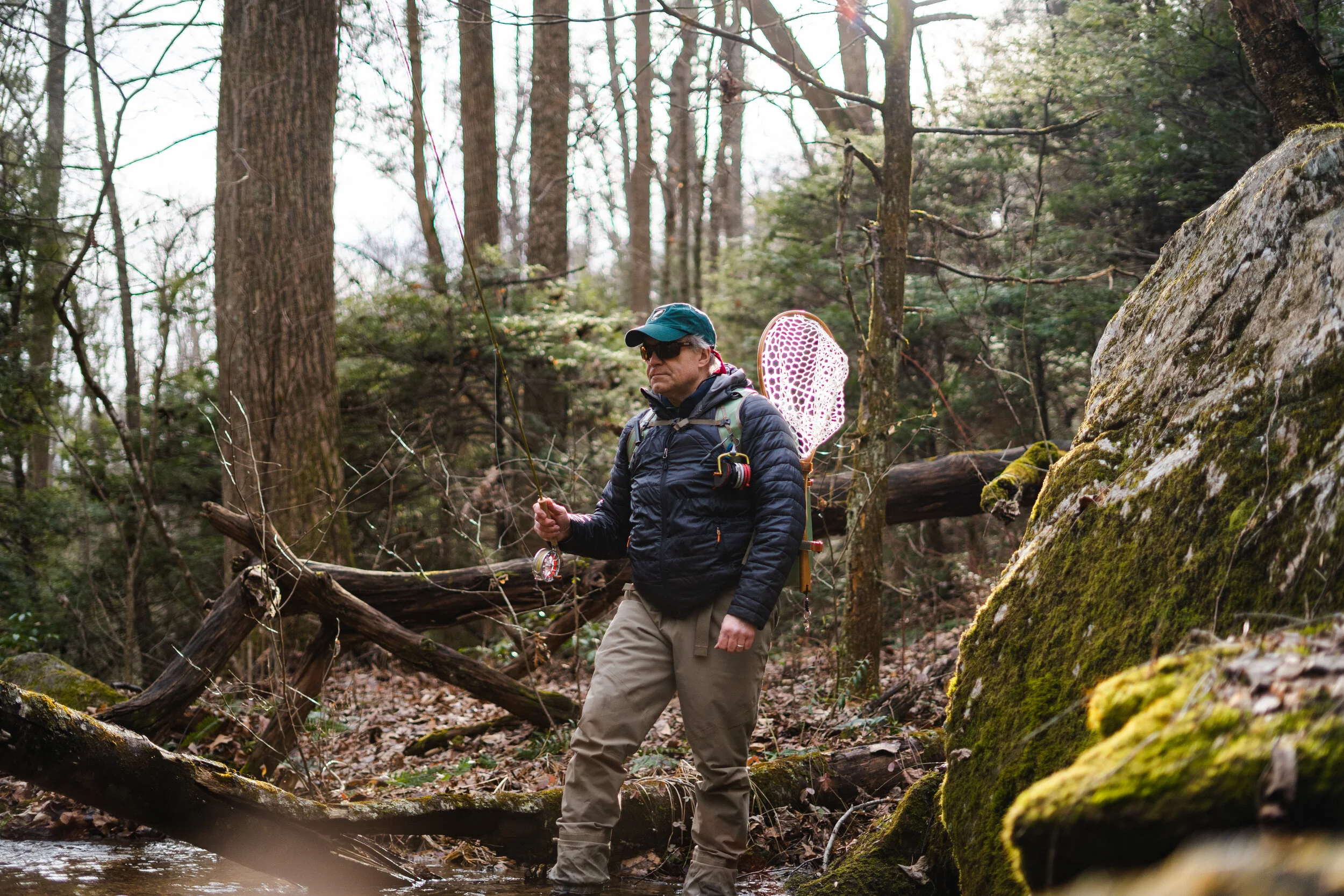As we transition from winter to spring, anglers across the country become enamored with the idea of shedding the extra layers and fishing the much-anticipated spring hatches. As the days grow warmer, the streams begin to change. Not only our beloved trout, below the foam line but the entire eco-system surrounding them. The driving catalyst for this change? Rising temperatures. During the winter, most trout are found in the back end of deep pools, near downed trees or logs. Those fishing spring creeks can often find fish holding around springs, close the bank. These springs release warm groundwater, a welcomed change to the trout during the winter months.
As March carries on, 60-70 degree days enter the forecast. The nighttime temperatures begin to rise and the trout’s metabolism follows suit. The tree buds awaken, and their roots extend deep into the earth searching for water. As the trees change, so do the insects, and the trout take notice. During winter, trout see far fewer flies, making the first weeks of the new season the most productive. But sadly, early spring comes and goes in the blink of an eye. Come May, the trout are heavily pressured, and all too familiar with standard tactics. Golfers leave the country clubs early and flock to Orvis in search of essentials. Older gentlemen breakout their wading staffs, and spin fisherman look to fill the coolers as local stream regulations allow for kept fish. To escape the crowds, fish early! Here are three tips to remember when fly fishing this early spring season.
Guard Up and Stay Stealthy.
With the warmer air/water temps a few things are certain. Driven by their hunger, trout develop opportunistic feeding habits this time of year. During the winter months, trout move less, eat less, and ultimately, care less. With their increased metabolism, trout are now willing to relocate in search of food. Anglers should remain stealthy, and fully aware of their presence on the stream. Not just visually, but acoustically. Sound travels much faster in water than air. Sound in 68-degree air travels at 343 meters per second. Sound in 68-degree water travels at 1,482 meters per second, meaning the sound of your footsteps underwater travels over four times faster than if you were out of the water. Don’t let your guard down, stay stealthy, and fish from the bank when possible.
Know Your Local Hatches and Don’t Be Afraid to Size Up.
Depending on the demographic, spring hatches will vary. As an east coast angler, midges are typically present year-round, and early spring is no exception. As winter loosens its icy grip, anglers trade their size 22’s for size 16-18 midges. Black Caddis nymphs and spent adults are also present come late March. General imitations in sizes 14-18 are always reliable options as well. On both the east and west coasts, Quill Gordons can be found in sizes 12-16. Blue Winged Olives (BWO) become more prominent on the west coast and offer excellent dry fly fishing on overcast days. In addition, fly shops serve as an excellent source of information when it comes to hatch specifics. While insect life tapers off during the winter, spring is here, and your fly size should reflect that. You never know, sizing up from a 20 to a 16 can be the difference between a frustrating morning and a personal best.
Think About Where Trout Should Be and Act Accordingly.
Trout enjoy the winter. What’s not to love? Between higher water and fewer anglers, trout feel far safer during the colder months. However, as the water temps change, so will the trout’s feeding lies. Trout are always looking for food and caloric intake is the least of their worries. While finding a hearty meal is always on their minds, trout prefer to do so while expending the least amount of energy
90% of a trout’s diet consists of subsurface nymphs. These nymphs are found clinging to rocks, waiting to emerge into the next life cycle. Anglers should anticipate where trout are located, and act accordingly. Areas underwater providing safety close to food sources serve as prime real estate for trout. Large rocks and downed trees provide the trout with cover, allowing them to feed in a more comfortable environment. Water moving around these rocks often kicks up nymphs, creating a conveyor belt feeding effect. Dropping nymphs ahead of large rocks imitates the natural cycle, and often leads to success. Historically, spring trout are found just outside of heavy flows, called “the seam”. This allows the fish to conserve energy while keeping an eye on the food that’s passing by.
Depending on location and species, other factors motivate trout to feed. Knowing the spawning times for your local streams can be extremely valuable. Hungry pre-spawn trout are protective, allowing streamer anglers to take full advantage. General streamers (Woolly Bugger, Slump Buster, and Articulated Baitfish) often catch the eyes of trout looking for a large meal or protecting their territory.
Regardless of your tactics, early spring is an opportunity, so get outside, find some fish, and test these tips for yourself!
Article by Native Release team member, Shane Macgregor. For more of his work, check him out on Instagram @sdmacgregor




